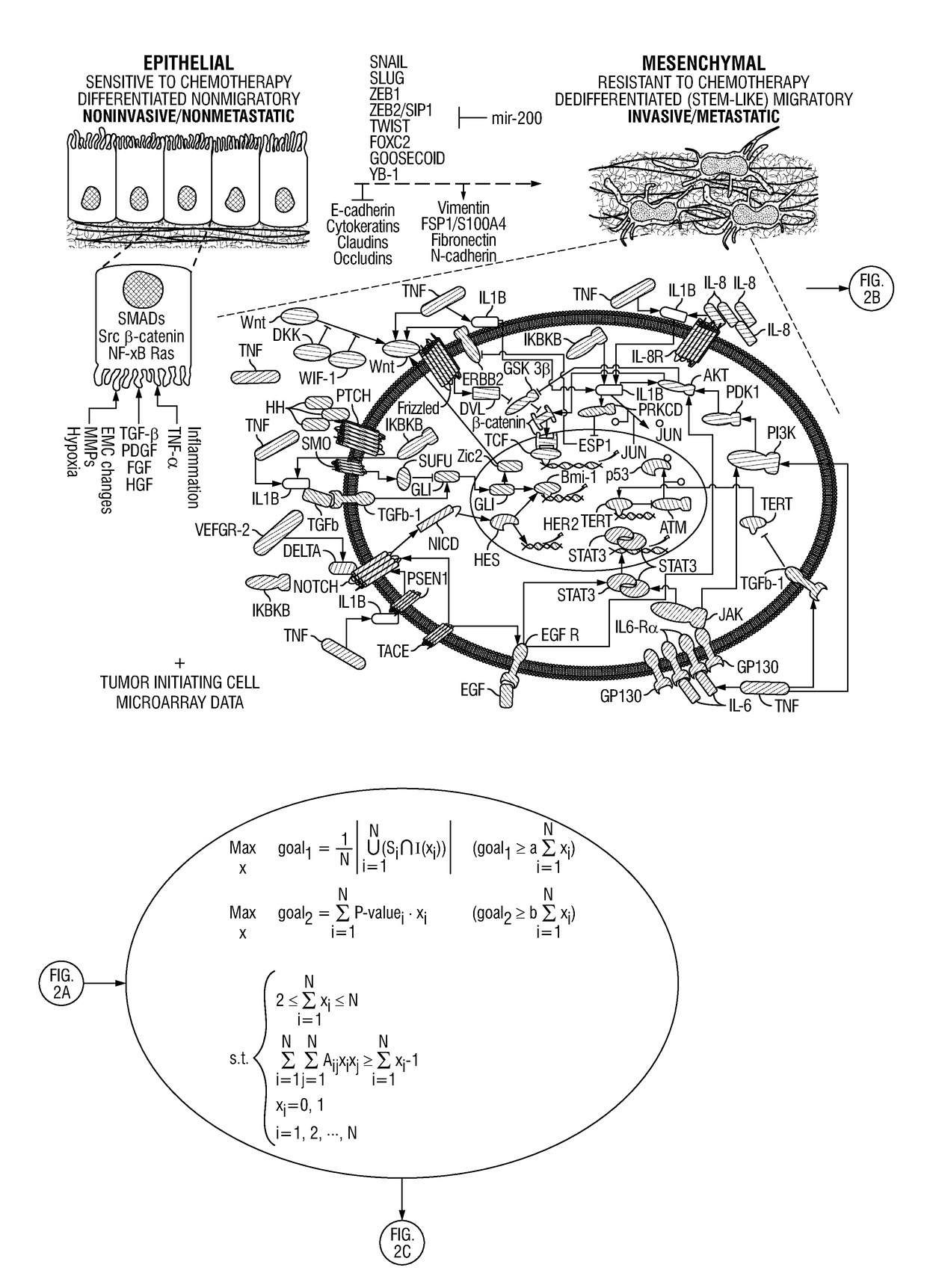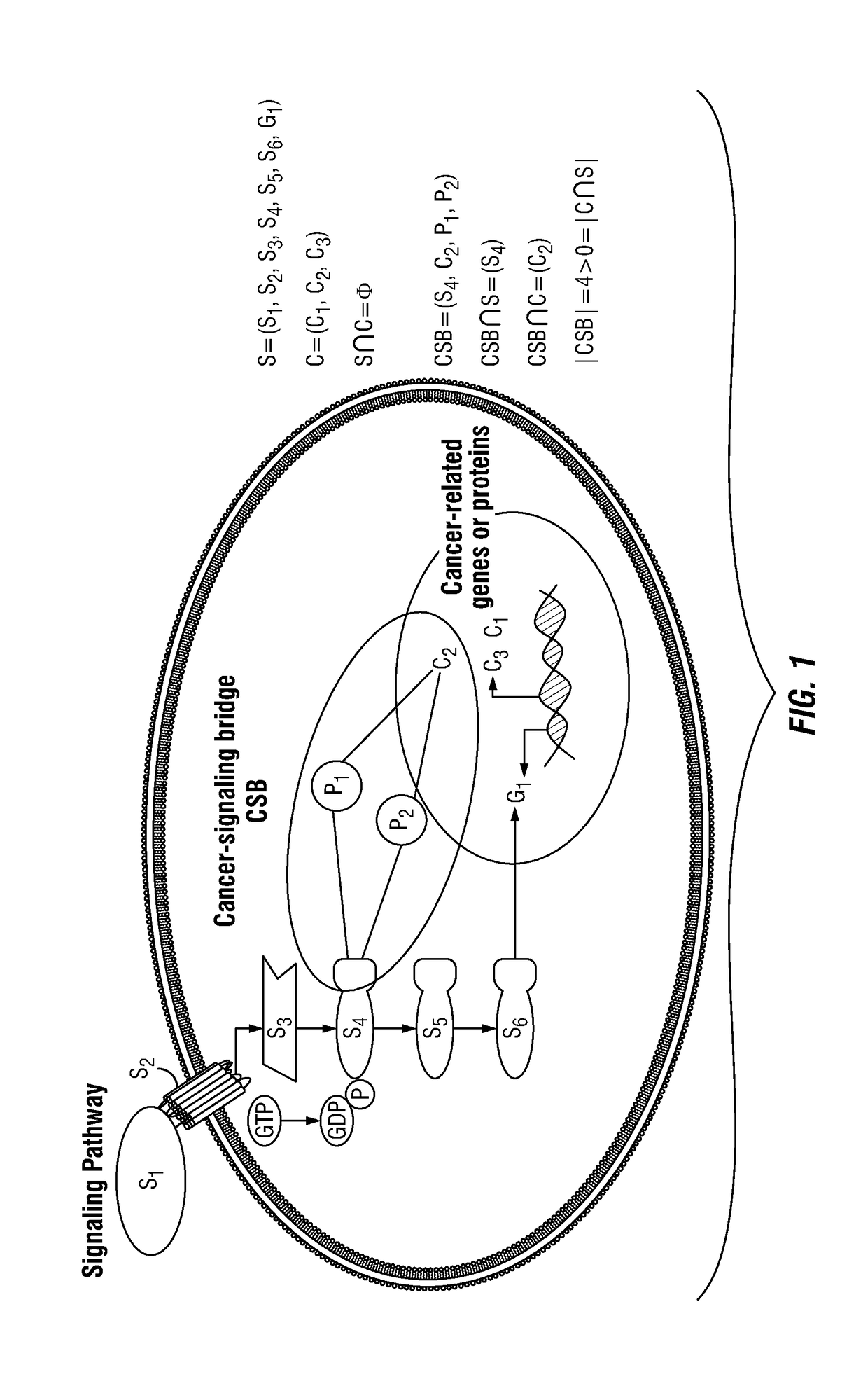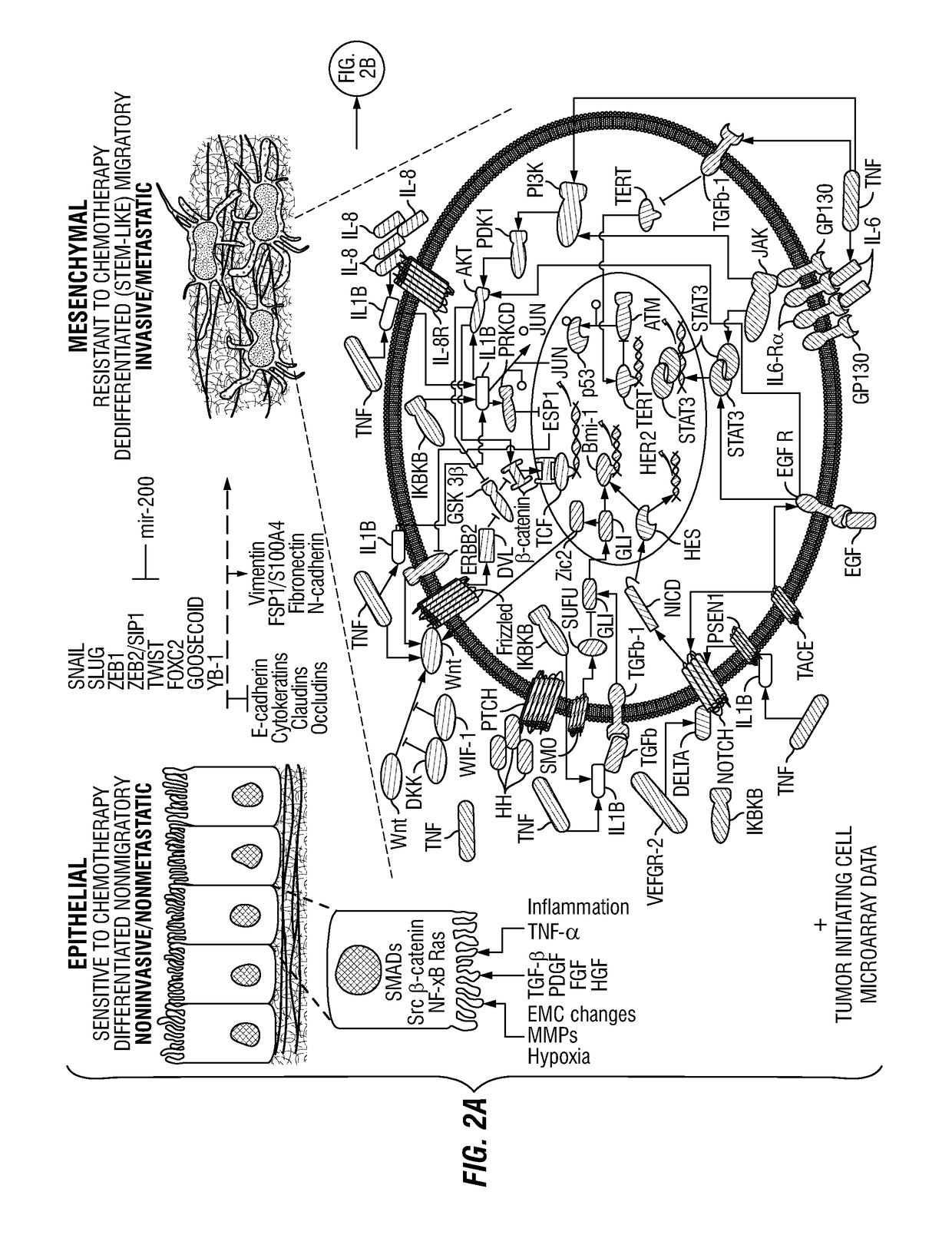Drug repositioning methods for targeting breast tumor initiating cells
a breast tumor and initiating cell technology, applied in climate sustainability, instruments, computing, etc., can solve the problems of little research done to address the huge opportunities, failure to understand the real effect of drugs, and little work on strategies to reposition experimental cancer agents
- Summary
- Abstract
- Description
- Claims
- Application Information
AI Technical Summary
Benefits of technology
Problems solved by technology
Method used
Image
Examples
example 1
A Systems Method for Drug Repositioning for Breast Cancer
[0073]This example describes a new network-motif based method to study the communication process between signaling pathways and individual cancer-related genes or proteins in order to expand cancer drug-targets of signaling pathways. A particular type of instances of network motifs, termed “cancer-signaling bridges” (CSBs), was identified in the present methods, which was shown to be enriched in the connections between oncogenic signaling pathways and cancer-related genes or proteins. These CSBs were used to expand the signaling pathways to different types of cancers, and we found that most CSBs are not shared by multiple types of cancers, but specifically connected to one type of cancer. Both drug-target and drug-effect analyses were performed on CSBs. It was found that the expanded signaling proteins are more likely to be targeted by anti-cancer drugs, and they are responsible for expanding the drug-effects from the targets ...
example 2
Method for Transcriptional Response Analysis to Facilitate Drug Repositioning
[0103]In this study, the OTE-based method described above was further refined to repurpose drugs for cancer therapeutics, based on transcriptional responses made in cells before and after drug treatment. Specifically, the identified CSBs were integrated with a Bayesian Factor Regression Model (BFRM) to form a new hybrid method termed CSB-BFRM. Using breast and prostate cancer cells and in promyelocytic leukemia cells, the CSB-BFRM analysis was demonstrated to accurately predict clinical responses to >90% of FDA-approved drugs and >75% of experimental clinical drugs that were tested. Mechanistic investigation of OTEs for several high-ranking drug-dose pairs suggested repositioning opportunities for cancer therapy, based on the ability to enforce Rb-dependent repression of important E2F-dependent cell cycle genes. Together, these findings establish new methods to identify opportunities for drug repositioning ...
PUM
 Login to View More
Login to View More Abstract
Description
Claims
Application Information
 Login to View More
Login to View More - R&D Engineer
- R&D Manager
- IP Professional
- Industry Leading Data Capabilities
- Powerful AI technology
- Patent DNA Extraction
Browse by: Latest US Patents, China's latest patents, Technical Efficacy Thesaurus, Application Domain, Technology Topic, Popular Technical Reports.
© 2024 PatSnap. All rights reserved.Legal|Privacy policy|Modern Slavery Act Transparency Statement|Sitemap|About US| Contact US: help@patsnap.com










